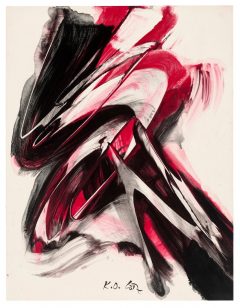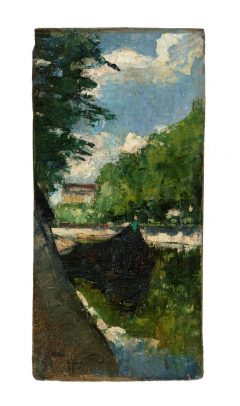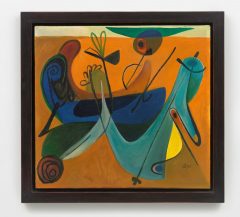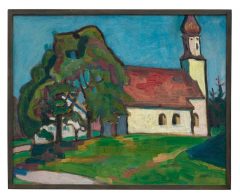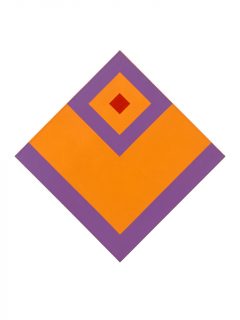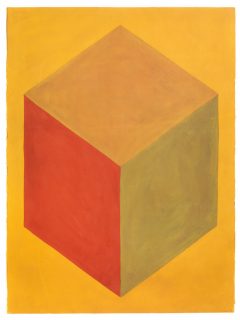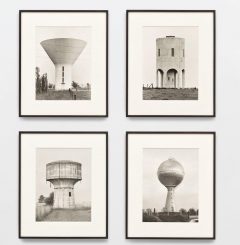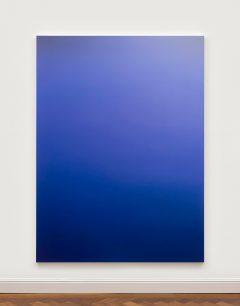Masterpieces of the Month:
Anke Darrelmann and Nina Wagner about their personal Highlights
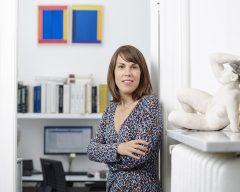
Anke Darrelmann
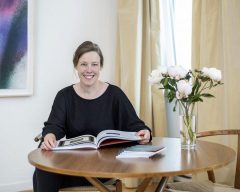
Nina Wagner
"Karl Otto Götz began to explore abstraction as early as 1933. After the war, in 1949, he became the only German artist to join the international artist group COBRA around Karel Appel, Asger Jorn and Corneille. His non-objective painting is a central contribution to the worldwide movement in visual art that broke new formal ground after 1945 by initiating the radical dissolution of the classical principle of form. From 1952 Götz found his typical gestural style of painting. His compositions are well thought out. Before Götz begins an oil painting, he first makes studies in gouache, acrylic or pencil to work out a basic composition. Only when the picture idea has matured, he takes up brush and canvas. The previously conceived and precisely calculated forms and structures are then transferred to the canvas in a matter of seconds. In our 1957 gouache on cardboard, you can vividly understand the movements of the artist in the creative process and the resulting dynamics of the forms. Using only one color - red - black and white, he creates a harmonious composition that seems to move in time as well as space."
"Lesser Ury spends his childhood in Berlin. At the age of 26, the young man travels across Europe for more than ten years, until he finally returns to his hometown in 1887. The metropolis became his favorite artistic motif. Again and again, Ury roamed his surroundings and, as a quiet observer, captured urban life in all its splendor. At different times of day, in the light of the glaring sun or in the darkness of night, and under changing weather conditions, he sketched numerous views of the big city and thus advanced to become one of the most important pioneers of German Impressionism. Especially in his small-format pictures, painted directly on location, he succeeds in creating an impressive depiction of what he sees, which in its compositional and atmospheric density is on a par with the large formats and conveys a particularly characteristic atmospheric image of life in Berlin in the 1920s."
"After various journeys, the painter Gabriele Münter and her partner at the time, Wassily Kandinsky, first came to the small town of Murnau in the Bavarian Oberland in 1908. The idyllic landscape appealed to the two artists and Münter decided to buy a country house. On walks and excursions in the surrounding area, the artist discovers her motifs, including our landscape format colorful work "Kirchlein von Riedhausen", which is created in the first summer in Murnau. The view is directed to the church. In bright yellow, red and blue, Münter formulates the view of the church with a broad brushstroke in similar areas of color. The violet-washed onion spire rises into the brilliant blue summer sky, and a group of trees presses up against the side of the nave, their green in complementary contrast to the red-tiled roof. Situated on a hill and nestled between trees and meadows, the church sits enthroned and magically draws the viewer under its spell. Münter outlines the almost monochrome color areas with strong contours and achieves a detachment from the natural colorfulness. She thereby increases the luminosity and achieves color impressions as she had studied in the traditional reverse glass painting of the Bavarian Oberland."
"The American artist Sol LeWitt is one of the pioneers and most important representatives of conceptual art. In the early 1960s he developed his own characteristic style with a minimalist reduction to color, form and pattern. The execution was only the visualization of the actual work of art, the idea, which was addressed to the mental perception of the audience, not to the optical, as painting did. He introduced this concept to the art world with his treatise Paragraphs on Conceptual Art, exerting a lasting influence on art history.
Constantly searching for the superlative of the painterly, the Düsseldorf artist Winfred Gaul experimented with a wide variety of materials, colors and forms and, after his informal works of the 1950s, devoted himself to the next important phase of his painting: sign and signal art, to which our work "Day and Night I" can also be counted. It describes a square surface, which is aligned like a rhombus on its top. The complementary colors orange and violet, which dominate the picture surface, also form rhombuses or stripes parallel to the edge of the picture. A particular point of attraction for the eye is the small red diamond in the upper corner of the picture, which gives the composition a special tension."
"In the art of the 20th century, there are few artists who have pursued their artistic concept as sustainably as Hilla and Bernd Becher. With their systematically documenting photography, the artist couple has written art history over the past 50 years and had a lasting influence on photographers of several generations. Since the early 1960s, they have been creating so-called typologies, series of various half-timbered houses and buildings of industrial-technical genres, such as winding towers, blast furnaces, coal bunkers, factory halls, gasometers, or grain silos, which they initially photographed primarily in Germany and the Benelux countries, and later throughout the world. Our work consists of a total of four black and white prints of the same size of water towers from Germany and France, taken between 1972 and 1983."
"In his paintings, Pieter Vermeersch explores the experiential dimensions of color, space, and time that underlie painting. Starting from photographic images of indeterminable phenomena, such as the monochrome backgrounds of Old Master portraits or rainbows, he creates diffuse atmospheric images in which any reference to time and place is absent. By representing something formerly abstract, Vermeersch at the same time undermines that art-historical demarcation that has divided painting into two camps since the dawn of modernism: Figuration and Abstraction."
